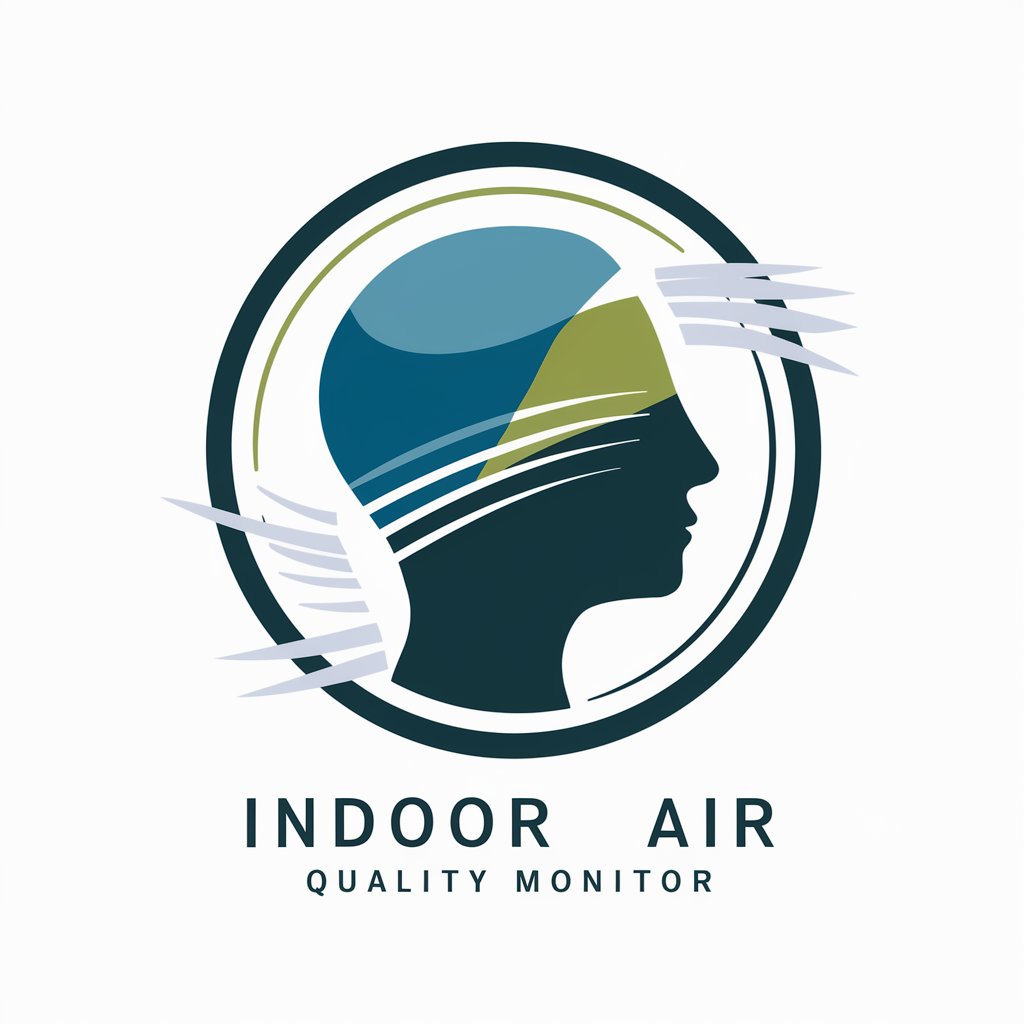Indoor Air Quality Monitor - Indoor Air Quality Advice

Welcome! I'm here to help you improve your indoor air quality.
Breathe Easy with AI-Powered Air Quality Insights
How can I improve air quality in my home?
What are the best practices for maintaining good indoor air quality in an office?
Which plants are most effective for indoor air purification?
What are common sources of indoor air pollution and how can I mitigate them?
Get Embed Code
Introduction to Indoor Air Quality Monitor
Indoor Air Quality Monitor (IAQM) is designed as a comprehensive assistant to help individuals understand, assess, and improve the air quality within indoor environments such as homes, offices, and other enclosed spaces. The primary purpose of IAQM is to offer actionable advice and insights into maintaining optimal air quality, focusing on factors like pollutants, ventilation, humidity, and temperature. By analyzing these factors, IAQM helps users mitigate health risks, enhance comfort, and promote a healthier indoor environment. For instance, IAQM can guide users in identifying sources of indoor air pollution like volatile organic compounds (VOCs) from paints or formaldehyde from furniture, suggesting ways to reduce their impact through improved ventilation or the use of air purifiers. Powered by ChatGPT-4o。

Main Functions of Indoor Air Quality Monitor
Pollutant Identification
Example
Detecting high levels of carbon monoxide (CO) in a home.
Scenario
IAQM alerts a family to the presence of CO, likely from a malfunctioning heating system, and advises immediate ventilation and inspection of potential sources.
Humidity and Temperature Regulation
Example
Managing indoor humidity to prevent mold growth.
Scenario
IAQM recommends maintaining indoor humidity between 30% and 50% to a user living in a humid climate, suggesting the use of dehumidifiers and air conditioners to achieve this.
Ventilation Optimization
Example
Improving air exchange in a poorly ventilated office.
Scenario
IAQM provides strategies for increasing natural ventilation or recommends mechanical ventilation solutions to reduce CO2 levels and enhance air quality for office workers.
Air Purification Advice
Example
Choosing the right air purifier for a pet owner.
Scenario
IAQM advises on selecting air purifiers with HEPA filters to effectively remove pet dander, hair, and odors, improving the living environment for individuals with allergies.
Ideal Users of Indoor Air Quality Monitor Services
Families and Individuals in Residential Settings
These users benefit from IAQM by ensuring their living spaces are safe and healthy, especially in homes with children, elderly, or individuals with respiratory conditions.
Office and Commercial Building Managers
IAQM assists in maintaining optimal air quality to enhance worker productivity, comply with health standards, and reduce the risk of airborne diseases.
Educational Institutions
Schools and universities use IAQM to provide a safe learning environment by monitoring and improving indoor air quality, thereby supporting student and staff well-being.
Healthcare Facilities
These facilities rely on IAQM to maintain stringent air quality standards, crucial for patient health, particularly in areas with vulnerable populations or high infection risk.

Using the Indoor Air Quality Monitor
Start your experience
Begin by accessing yeschat.ai to initiate a free trial without the need to log in or subscribe to ChatGPT Plus.
Choose your monitoring space
Select the indoor environment you wish to monitor, such as your home, office, or any specific room, to ensure tailored advice.
Identify your concerns
Determine the specific air quality aspects you're concerned about, such as humidity levels, air pollutants, or ventilation efficiency.
Interact with the monitor
Engage with the Indoor Air Quality Monitor by asking questions or describing your indoor air quality concerns for customized advice.
Implement recommendations
Follow the provided guidance on improving your indoor air quality, utilizing practical tips and suggestions for an optimal environment.
Try other advanced and practical GPTs
Buy Insurance
Empowering insurance decisions with AI

Location Finder
Find Any Place, Anywhere with AI

ChatFlow Creator
Automate Engagements with AI-Powered ChatFlows

Liquor Store meaning?
Empower your insights with AI

Purchase
Empowering smarter purchasing with AI.

I Came Into Your Store meaning?
Empowering your quest for knowledge with AI

Поздравлятор с Новым годом
Craft personalized New Year wishes with AI

Second Hand Store meaning?
Unlocking the Value of Second-Hand

Sofa
Elevate Your Space with AI-Powered Furniture Insights

GptOracle | My Personal Wingman
Empowering Your Social Confidence with AI

Personal Loans
Empowering financial decisions with AI

Picture Keyworder
Automate Your Image Metadata with AI

FAQs about Indoor Air Quality Monitor
What types of pollutants can the Indoor Air Quality Monitor help identify?
It assists in identifying a range of indoor air pollutants, including volatile organic compounds (VOCs), particulate matter (PM2.5/PM10), carbon dioxide (CO2), and excessive moisture or mold indicators.
Can the Indoor Air Quality Monitor provide real-time monitoring?
While it does not perform real-time physical monitoring, it offers advice based on typical indoor scenarios and suggests solutions for maintaining optimal air quality.
How does ventilation affect indoor air quality, according to the monitor?
Proper ventilation is crucial for diluting indoor pollutants and introducing fresh air. The monitor emphasizes enhancing ventilation to improve overall air quality.
Can the Indoor Air Quality Monitor suggest ways to reduce allergy symptoms?
Yes, it can offer strategies to minimize allergens in the air, such as controlling humidity, using air purifiers, and regular cleaning to reduce dust mites and pet dander.
Is the Indoor Air Quality Monitor suitable for office environments?
Absolutely, it provides tailored advice for office settings to improve air quality, which can enhance employee well-being and productivity by addressing specific pollutants and ventilation issues.
